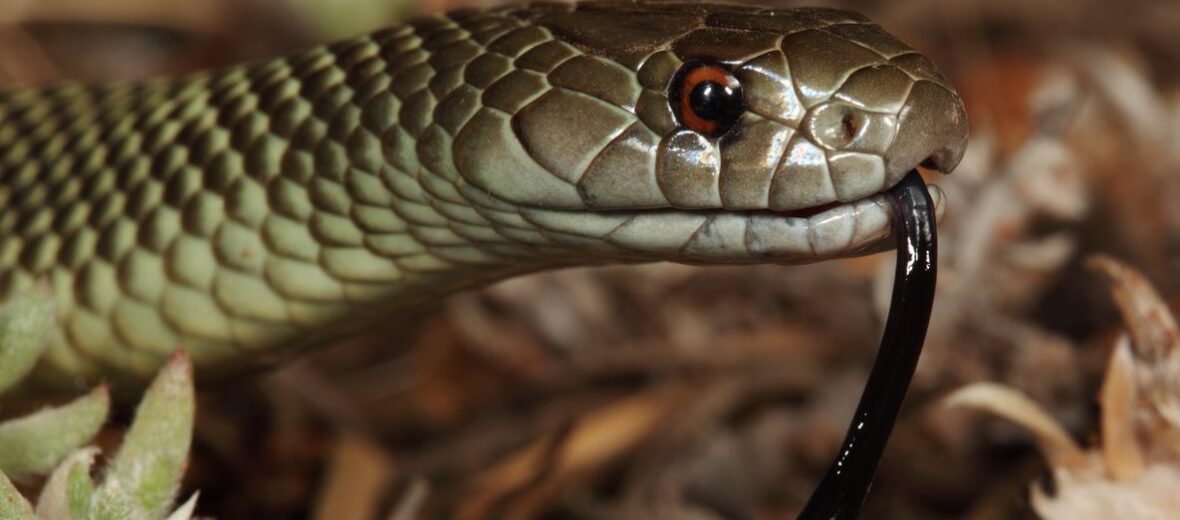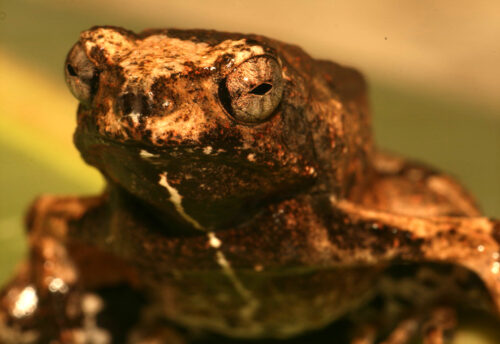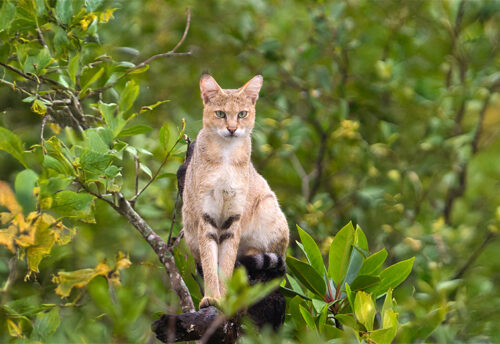
The mulga snake, aka king brown snake, is the heaviest venomous snake in Australia and also has the largest venom yield of any snake in the world! You’ll find these deadly serpents throughout Australia, except in Victoria, Tasmania and the most southern parts of Western Australia. So not only are they deadly, but they’re common. You can find them in closed tropical monsoon forests to Triodia hummock grasslands, chenopod shrublands and almost bare terrain, or sandy deserts. So they are quite tolerant of a variety of habitats.
First the Stats…
Scientific name: Pseudechis australis
Weight: Up to 13 lbs.
Length: Up to 10 feet
Lifespan: Up to 30 years
Now on to the Facts!
1.) They deliver up to 150mg of venom in a single bite! In comparison, the tiger snake only produces 10 – 40mg.
2.) One of the reasons for the massive amount of venom being delivered is that they will latch on and continue chewing to pump more venom into their victim.
3.) These elapids eat reptiles, amphibians, reptile eggs, bird eggs, birds, and mammals. They have also been observed eating invertebrates and carrion.
4.) Mulga Snakes are immune to the venom of at least one of their snake prey, the Western Brown Snake (Pseudonaja nuchalis), and also don’t seem affected when bitten by their own kind.
5.) Their has been a decline in their species due to the cane toad. Seeing as they are not immune to their poison.
But wait, there’s more on the mulga snake!
6.) Mulgas are crepuscular (active at dawn and dusk), diurnal (active during the day – In winter months), nocturnal (active at night – during summer months), and are typically a terrestrial snake but they can climb; if necessary.
7.) Males fight for female breeding rights by entwining with each other and swaying their heads in an effort to push over the opposing male.
Did you know…?
Their venom is a combination of haemolytic (breaks down blood cells), cytotoxic (disrupts cellular activity), myotoxic (affects muscles), and also neurotoxic (affects the nervous system).
8.) When threatened, the Mulga snake will inflate its body and hold its head and flattened neck up in a wide curve parallel to the ground. It will throw its head and neck from side to side, hissing loudly as it does. If harassed further it will strike out in an attempt to bite.
Now a Short Mulga Snake Video!
Also, check out the Critter Science YouTube channel. Videos added frequently!
Want to suggest a critter for me to write about? Let me know here.



